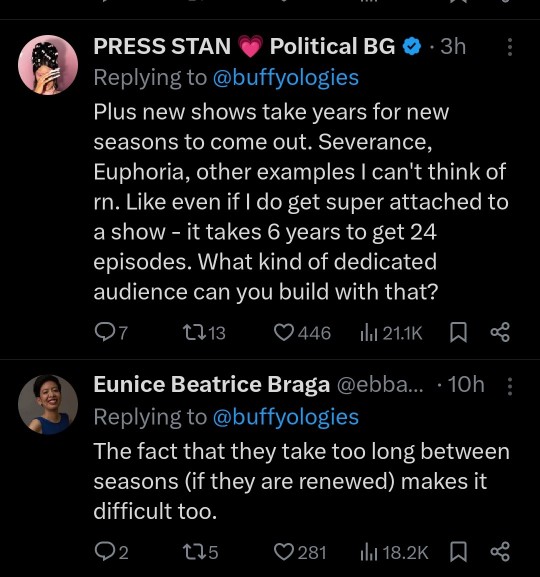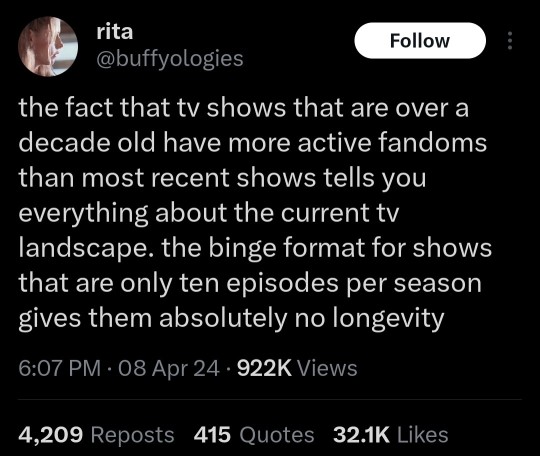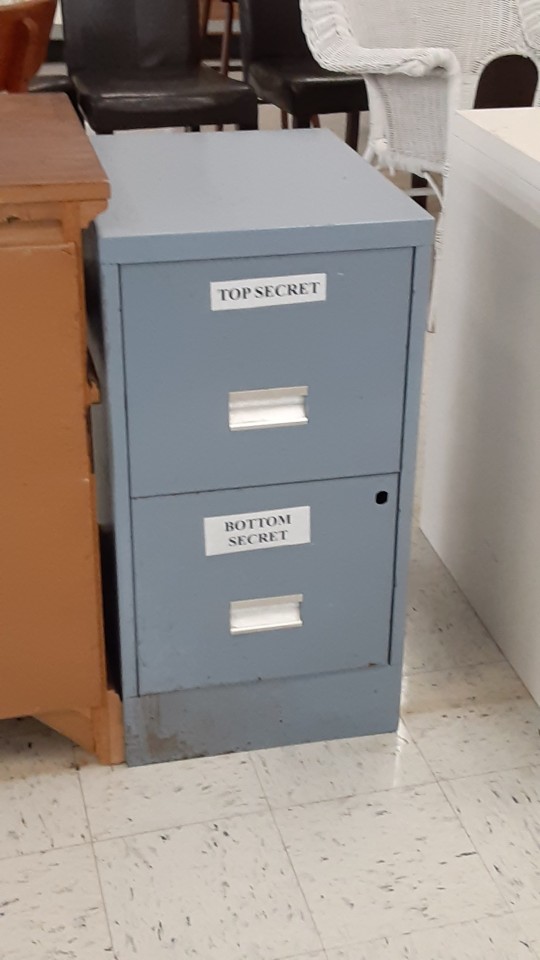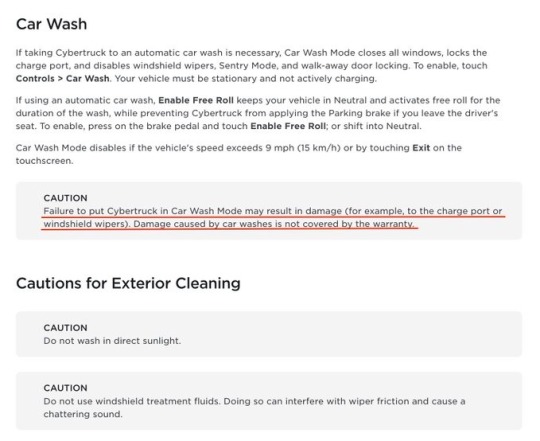Text
24K notes
·
View notes
Photo

If a girl is to do the same superman thing where he takes off his disguise, we just look pervy. Not the same effect
1M notes
·
View notes
Text
Out of curiosity and also guilt over my own coffee intake. I wanna ask:
Now I'm not talking about when you're studying and so you drink 3x the usual amount or something like that. This isn't me asking what your record is. I'm talking about the most basic, average day, how many coffees you drink?
14K notes
·
View notes
Text

Hi, Mass Effect Legendary Edition is on sale for SIX DOLLARS.
That's all three games, almost all the DLCs (rip, Pinnacle Station) including weapon and armor packs, for six goddamn dollars.
4K notes
·
View notes
Text
There, in the sunlit forest on a high ridgeline, was a tree I had never seen before.
I spend a lot of time looking at trees. I know my beech, sourwood, tulip poplar, sassafras and shagbark hickory. Appalachian forests have such a diverse tree community that for those who grew up in or around the ancient mountains, forests in other places feel curiously simple and flat.
Oaks: red, white, black, bur, scarlet, post, overcup, pin, chestnut, willow, chinkapin, and likely a few others I forgot. Shellbark, shagbark and pignut hickories. Sweetgum, serviceberry, hackberry, sycamore, holly, black walnut, white walnut, persimmon, Eastern redcedar, sugar maple, red maple, silver maple, striped maple, boxelder maple, black locust, stewartia, silverbell, Kentucky yellowwood, blackgum, black cherry, cucumber magnolia, umbrella magnolia, big-leaf magnolia, white pine, scrub pine, Eastern hemlock, redbud, flowering dogwood, yellow buckeye, white ash, witch hazel, pawpaw, linden, hornbeam, and I could continue, but y'all would never get free!
And yet, this tree is different.
We gather around the tree as though surrounding the feet of a prophet. Among the couple dozen of us, only a few are much younger than forty. Even one of the younger men, who smiles approvingly and compliments my sharp eye when I identify herbs along the trail, has gray streaking his beard. One older gentleman scales the steep ridge slowly, relying on a cane for support.
The older folks talk to us young folks with enthusiasm. They brighten when we can call plants and trees by name and list their virtues and importance. "You're right! That's Smilax." "Good eye!" "Do you know what this is?—Yes, Eupatorium, that's a pollinator's paradise." "Are you planning to study botany?"
The tree we have come to see is not like the tall and pillar-like oaks that surround us. It is still young, barely the diameter of a fence post. Its bark is gray and forms broad stripes like rivulets of water down smooth rock. Its smooth leaves are long, with thin pointed teeth along their edges. Some of the group carefully examine the bark down to the ground, but the tree is healthy and flourishing, for now.
This tree is among the last of its kind.
The wood of the American Chestnut was once used to craft both cradles and coffins, and thus it was known as the "cradle-to-grave tree." The tree that would hold you in entering this world and in leaving it would also sustain your body throughout your life: each tree produced a hundred pounds of edible nuts every winter, feeding humans and all the other creatures of the mountains. In the Appalachian Mountains, massive chestnut trees formed a third of the overstory of the forest, sometimes growing larger than six feet in diameter.
They are a keystone species, and this is my first time seeing one alive in the wild.
It's a sad story. But I have to tell you so you will understand.
At the turn of the 20th century, the chestnut trees of Appalachia were fundamental to life in this ecosystem, but something sinister had taken hold, accidentally imported from Asia. Cryphonectria parasitica is a pathogenic fungus that infects chestnut trees. It co-evolved with the Chinese chestnut, and therefore the Chinese chestnut is not bothered much by the fungus.
The American chestnut, unlike its Chinese sister, had no resistance whatsoever.
They showed us slides with photos of trees infected with the chestnut blight earlier. It looks like sickly orange insulation foam oozing through the bark of the trees. It looks like that orange powder that comes in boxes of Kraft mac and cheese. It looks wrong. It means death.
The chestnut plague was one of the worst ecological disasters ever to occur in this place—which is saying something. And almost no one is alive who remembers it. By the end of the 1940's, by the time my grandparents were born, approximately three to four billion American chestnut trees were dead.
The Queen of the Forest was functionally extinct. With her, at least seven moth species dependent on her as a host plant were lost forever, and no one knows how much else. She is a keystone species, and when the keystone that holds a structure in place is removed, everything falls.
Appalachia is still falling.
Now, in some places, mostly-dead trees tried to put up new sprouts. It was only a matter of time for those lingering sprouts of life.
But life, however weak, means hope.
I learned that once in a rare while, one of the surviving sprouts got lucky enough to successfully flower and produce a chestnut. And from that seed, a new tree could be grown. People searched for the still-living sprouts and gathered what few chestnuts could be produced, and began growing and breeding the trees.
Some people tried hybridizing American and Chinese chestnuts and then crossing the hybrids to produce purer American strains that might have some resistance to the disease. They did this for decades.
And yet, it wasn't enough. The hybrid trees were stronger, but not strong enough.
Extinction is inevitable. It's natural. There have been at least five mass extinctions in Earth's history, and the sixth is coming fast. Many people accepted that the American chestnut was gone forever. There had been an intensive breeding program, summoning all the natural forces of evolution to produce a tree that could survive the plague, and it wasn't enough.
This has happened to more species than can possibly be counted or mourned. And every species is forced to accept this reality.
Except one.
We are a difficult motherfucker of a species, aren't we? If every letter of the genome's book of life spelled doom for the Queen of the Forest, then we would write a new ending ourselves. Research teams worked to extract a gene from wheat and implant it in the American chestnut, in hopes of creating an American chestnut tree that could survive.
This project led to the Darling 58, the world's first genetically modified organism to be created for the purpose of release into the wild.
The Darling 58 chestnut is not immune, the presenters warned us. It does become infected with the blight. And some trees die. But some live.
And life means hope.
In isolated areas, some surviving American Chestnut trees have been discovered, most of them still very young. The researchers hope it is possible that some of these trees may have been spared not because of pure luck, but because they carry something in their genes that slows the blight in doing its deadly work, and that possibly this small bit of innate resistance can be shaped and combined with other efforts to create a tree that can live to grow old.
This long, desperate, multi-decade quest is what has brought us here. The tree before me is one such tree: a rare survivor. In this clearing, a number of other baby chestnut trees have been planted by human hands. They are hybrids of the Darling 58 and the best of the best Chinese/American hybrids. The little trees are as prepared for the blight as we can possibly make them at this time. It is still very possible that I will watch them die. Almost certainly, I will watch this tree die, the one that shades us with her young, stately limbs.
Some of the people standing around me are in their 70's or 80's, and yet, they have no memory of a world where the Queen of the Forest was at her full majesty. The oldest remember the haunting shapes of the colossal dead trees looming as if in silent judgment.
I am shaken by this realization. They will not live to see the baby trees grow old. The people who began the effort to save the American chestnut devoted decades of their lives to these little trees, knowing all the while they likely never would see them grow tall. Knowing they would not see the work finished. Knowing they wouldn't be able to be there to finish it. Knowing they wouldn't be certain if it could be finished.
When the work began, the technology to complete it did not exist. In the first decades after the great old trees were dead, genetic engineering was a fantasy.
But those that came before me had to imagine that there was some hope of a future. Hope set the foundation. Now that little spark of hope is a fragile flame, and the torch is being passed to the next generation.
When a keystone is removed, everything suffers. What happens when a keystone is put back into place? The caretakers of the American chestnut hope that when the Queen is restored, all of Appalachia will become more resilient and able to adapt to climate change.
Not only that, but this experiment in changing the course of evolution is teaching us lessons and skills that may be able to help us save other species.
It's just one tree—but it's never just one tree. It's a bear successfully raising cubs, chestnut bread being served at a Cherokee festival, carbon being removed from the atmosphere and returned to the Earth, a wealth of nectar being produced for pollinators, scientific insights into how to save a species from a deadly pathogen, a baby cradle being shaped in the skilled hands of an Appalachian crafter. It's everything.
Despair is individual; hope is an ecosystem. Despair is a wall that shuts out everything; hope is seeing through a crack in that wall and catching a glimpse of a single tree, and devoting your life to chiseling through the wall towards that tree, even if you know you will never reach it yourself.
An old man points to a shaft of light through the darkness we are both in, toward a crack in the wall. "Do you see it too?" he says. I look, and on the other side I see a young forest full of sunlight, with limber, pole-size chestnut trees growing toward the canopy among the old oaks and hickories. The chestnut trees are in bloom with fuzzy spikes of creamy white, and bumblebees heavy with pollen move among them. I tell the man what I see, and he smiles.
"When I was your age, that crack was so narrow, all I could see was a single little sapling on the forest floor," he says. "I've been chipping away at it all my life. Maybe your generation will be the one to finally reach the other side."
Hope is a great work that takes a lifetime. It is the hardest thing we are asked to do, and the most essential.
I am trying to show you a glimpse of the other side. Do you see it too?
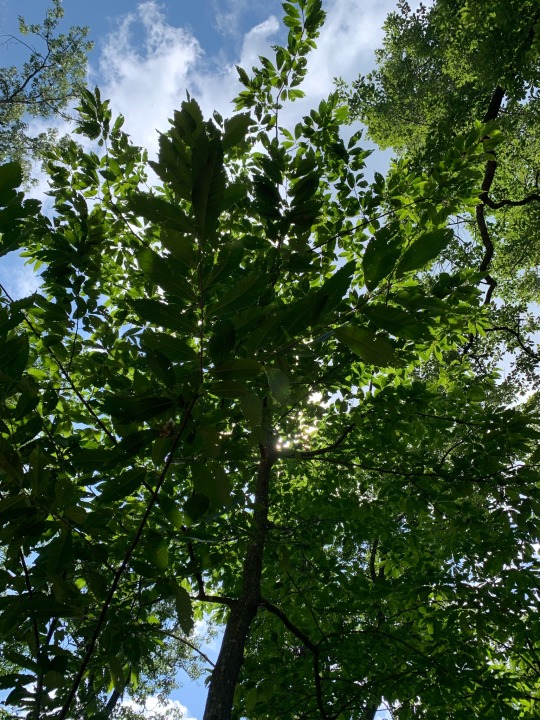
3K notes
·
View notes
Text
So one thing I’ve noticed is that people’s DnD characters may vary but there is usually an underlying thread that they all have in common. This thread is typically related to what that person struggles with the most.
For instance, my betrotheds DnD characters: a bitchy warlock we had to bust out of two different pacts, a sassy barbarian, a reformed drow cultist, and a sunshine fighter cleric.
All these characters were wildly different but at their very core struggle was them grappling with their self worth. My betrothed struggles with their worth a great deal and even with different facets showing their characters all have that too.
Mine all tend to contend with different themes of loneliness and acceptance. Surprise, surprise, the little autistic gremlin yearns to have been met with more love and lasting friendships.
So we’re at breakfast. I am meeting a new friend of my betrotheds for the first time. It’s been twenty minutes since I’ve met this man. I say my theory. He laughs. He starts to describe a few of his characters but specifies that he often has healing aspects. He gives a very broad overview of their character arcs.
I ponder for a moment then said, “Would you like to have my assessment?”
He laughed, “Sure!”
“We’ve just met. It’s gonna get real.”
“Bring it on.”
“I think your struggle is that you feel you must offer something of value or service to people to be worthy of their love.”
His jaw dropped. His fork froze midway to his mouth. A potato fell. He stared into space as this sank in. Quietly he said, “Oh.”
4K notes
·
View notes
Text
Hannah Montana is fucked up because its entire POINT as a show is that children should be protected from fame and exploitation, but it stars a REAL little girl that's being exploited. Nearly every episode carries the looming threat of Miley being outed as Hannah and losing her peaceful teenage life to the ravages of fame. Her father in the show (played by her own father in real life) wisely protected her from the trauma of fame by making her wear a disguise and live a rather quiet, interview-free life. Meanwhile the REAL Billy Ray Cyrus sold his daughter to Disney Channel when she was 11 and forced her to read dialogue about how terrible it would be to face the public eye. Like... Jesus, dude. The fictional Robby Ray is 10x the father, and it's not even close. (It's also IMMENSELY funny that her dad doesn't use his real name in the show, while she does. Almost like he wanted a bit of a disconnect between his identity and his character. Something Miley didn't get.)
18K notes
·
View notes
Text
James Norrington did nothing wrong. His only crime was being a Jane Austen hero in a Disney movie based on a theme park ride.
64K notes
·
View notes
Photo

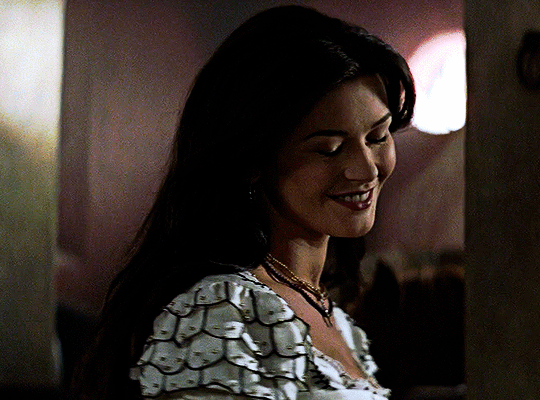
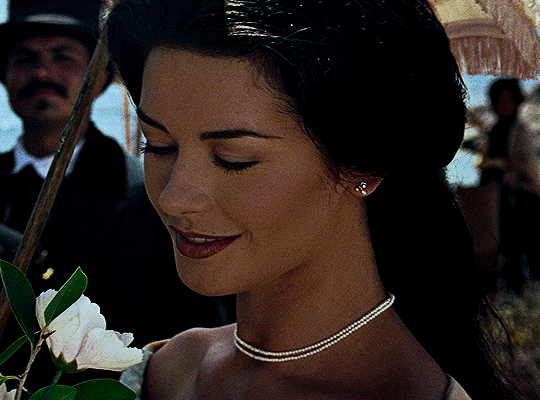

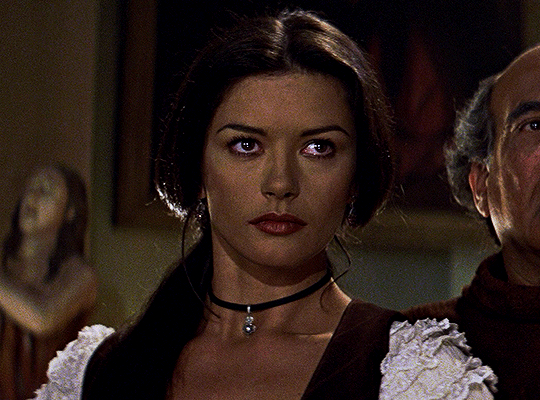
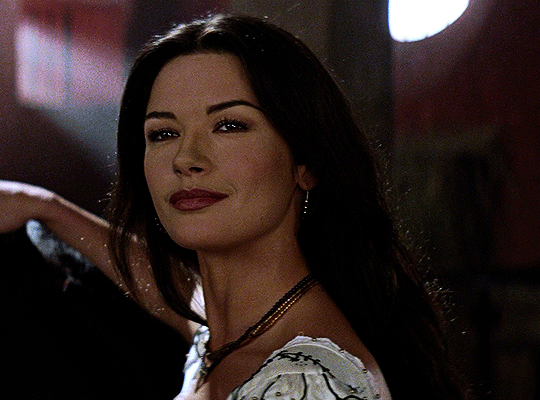
CATHERINE ZETA-JONES
as Elena Montero
THE MASK OF ZORRO (1998)
6K notes
·
View notes
Text
When Everything Everywhere All at Once said “The only thing I do know is that we have to be kind. Please, be kind, especially when we don’t know what’s going on"
When the Good Place said “Why choose to be good every day when there is no guaranteed reward now or in the afterlife… I argue that we choose to be good because of our bonds with other people and our innate desire to treat them with dignity. Simply put, we are not in this alone.”
When Jean-Paul Sartre said ”‘Hell is other people’ is only one side of the coin. The other side, which no one seems to mention, is also ‘Heaven is each other’. Hell is separateness, uncommunicability, self-centeredness, lust for power, for riches, for fame. Heaven on the other hand is very simple, and very hard: caring about your fellow beings.“
64K notes
·
View notes
Text
idgaf if bethesda ever tells us concretely which country launched the first nuke, the only answer i will accept is the original one, the one that said "we wont tell you, because it doesnt matter. there is no moral highground in the story of the great war, and the end result for those alive today is all the same either way. those most responsible faced the fewest consequences, and no justice was served. there is no justifiable way to nuke anyone, no matter who struck first. everyone lost and thats the very nature of war and always has been. war is evil, and in that way, war never changes"
not broadcasting who was "really to blame" is purposeful, and any other answer would undercut fallout's core identity to me
28K notes
·
View notes


